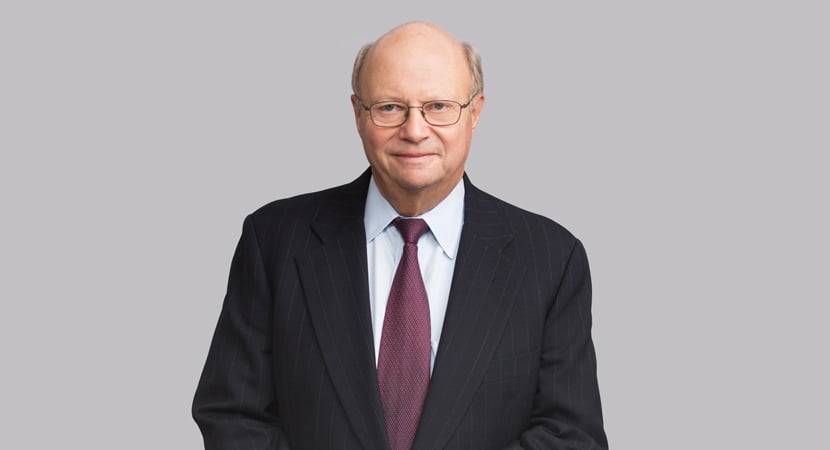California Court of Appeal affirms summary judgment in favor of James Cameron and Lightstorm Entertainment in idea submission case, finding plaintiff unable to prove that defendants used any of plaintiff’s ideas in blockbuster motion picture “Avatar.”
Plaintiff Eric Ryder, author of the science fiction short story “KRZ 2068,” sued defendants James Cameron and Lightstorm Entertainment, a production company, alleging that the defendants fraudulently expressed interest in developing Ryder’s “KRZ” story, only to use elements of that story in the 2009 Cameron film “Avatar”. In his suit, Ryder alleged claims for (1) breach of fiduciary duty, (2) breach of express contract, (3) breach of implied contract, (4) promissory fraud, (5) fraud and deceit, and (6) negligent misrepresentation. The lower court granted defendants’ motion for summary judgment on all claims, finding that Ryder failed to create an inference that defendants had used his material, that Cameron had independently created “Avatar,” and that there were no triable issues of fact as to Ryder’s contract and fraud claims. Ryder appealed.
As the Court of Appeal outlines in its opinion, Cameron first conceived the “Avatar” story in 1995 and recorded the details of this story in a 102-page scriptment which was, for a time, circulated around Hollywood to generate interest. However, as Cameron determined that the technology available at the time would not allow him to make the film as he envisioned, he shelved the project until 2005. In 2005, Cameron revisited Avatar, drafted a screenplay and began principal photography in 2007.
Meanwhile, between 1996 and 1998, Ryder wrote his “KRZ” short story about a corporate investigator who is sent to the corporation’s mining operation on one of Jupiter’s moons to investigate the mysterious death of the mining foreman, only to become embroiled in a conspiracy-laden war between the corporate agents and the robotic humanoids that work in the mines. In 1998, seeking financing for his “KRZ” project, Ryder began distributing the story along with a proposal containing language that required the recipient to agree that the material was to remain confidential and that it would not be used for any purpose other than that for which it was intended. In early 2000, the “KRZ” materials found their way to Jay Sanders, a development executive at Lightstorm. Ryder and others, along with Lightstorm producers and executives, developed the “KRZ” project for a number of months. Though the length of this development period was disputed by the parties, there was eventually a final pitch meeting to top Lightstorm executives — a meeting that Cameron did not attend. Lightstorm passed on the “KRZ” project, and Ryder’s subsequent attempts to sell the project to other production companies were unsuccessful. “Avatar” was released in 2009. Ryder filed suit in 2011 against defendants, claiming they used his ideas from the “KRZ” project in “Avatar.”
In the Court of Appeal’s de novo review of the trial court’s grant of defendants’ motion for summary judgment, the court first examined Ryder’s claims for breach of fiduciary duty, breach of express contract and breach of implied contract. For each of these claims, the court determined, Ryder must prove that the defendants actually used his ideas in “Avatar.” If there is no direct evidence that the plaintiff’s ideas were used by defendants, use can be inferred by showing that the defendants had access to the plaintiff’s ideas and that the parties’ ideas are similar. Under the breach of fiduciary duty and breach of implied contract claims, the works must be shown to be substantially similar to raise an inference of use. For the breach of express contract claim, the level of similarity required to raise this inference depends on the language of the parties’ agreement.
While Ryder argued that the proposal attached to his “KRZ” submission (which the court assumed but did not rule created a binding contract between the parties) required that the parties’ ideas be something less than substantially similar, the court disagreed. The terms of the proposal prohibited the recipient from copying any of the “KRZ” material, “in whole or in part,” and the court found that the “in part” language did not mean that the defendants could not use any part of the “KRZ” material, “no matter how trivial or minor,” but rather, it mirrored the analysis of when “copying” occurs in copyright cases — an analysis that requires a showing, in part, of substantial similarity. To establish an inference that his material was used by defendants — a necessary element of his claims of breach of fiduciary duty, implied contract and express contract — Ryder was required to demonstrate that elements of Avatar are substantially similar to the ideas in his “KRZ” project.
Ryder proposed a number of allegedly similar elements between the two works, but the court disregarded all those elements that appeared in Cameron’s 1996 scriptment, as those elements logically could not have been used from Ryder’s material, which was created later. Ryder also argued that there were 12 ideas that were added to “Avatar” after the initial creation of Cameron’s scriptment. The court reviewed each of these alleged similarities, comparing the elements of both “Avatar” and “KRZ,” and found that there was no substantial similarity between the two works on any of these claimed elements. Noting that, where there is no substantial similarity between two works, a court may resolve the issue as a matter of law, the court held that Ryder could not establish an inference that defendants used his ideas as a matter of law. As the court reached this conclusion, there was no need to address the question of whether defendants had access to Ryder’s work. The court determined that the trial court properly granted summary judgment on Ryder’s claims for breach of fiduciary duty, breach of implied contract and breach of express contract.
Ryder also alleged that Lightstorm failed to inform him of the existing” Avatar” scriptment because it fraudulently intended to take Ryder’s ideas from “KRZ” in order to assist Cameron in his development of “Avatar.” Additionally, Ryder claimed that Lightstorm induced him to take “KRZ” off the market by falsely expressing an interest in developing the project. The court did not give much credence to these arguments, finding no evidence of any intentional misrepresentation or false promise, a necessary element for a fraud claim. Rather, the court pointed to the fact that Sanders, the development executive at Lightstorm, showed a sincere interest in the “KRZ” project when he continued to work with Ryder on developing it even after Sanders no longer worked at Lightstorm. Furthermore, the court found no evidence that Ryder suffered any harm from defendants’ allegedly fraudulent conduct, because not only did the defendants not use any of Ryder’s ideas, but also even if the alleged harm was keeping “KRZ” off the market while it was being developed by Lightstorm, Ryder offered no evidence that he missed any other development opportunities during that time, and the facts show that he had been unsuccessful for years in trying to sell the “KRZ” project. As the court found that Ryder could not prove these elements in any of his fraud claims, it held that summary judgment was properly granted on these causes of action.
The court also addressed two additional points. First, the court determined that, because Ryder failed to address his negligent misrepresentation claim on appeal, that claim was abandoned. Second, the court affirmed the trial court’s denial of Ryder’s motion for discovery sanctions because the documents at the center of the discovery dispute were related to questions of access and, as the court did not need to address that question in its review, it found that the motion was moot.
-
 Partner
Partner -
 Partner
Partner -
 Co-Chair, Litigation
Co-Chair, Litigation -
 Chair, Intellectual Property Protection; Chair, Luxury Brands; Deputy Chair, Advanced Media and Technology
Chair, Intellectual Property Protection; Chair, Luxury Brands; Deputy Chair, Advanced Media and Technology -
 Partner
Partner -
 Legal Publications Editor
Legal Publications Editor
)

